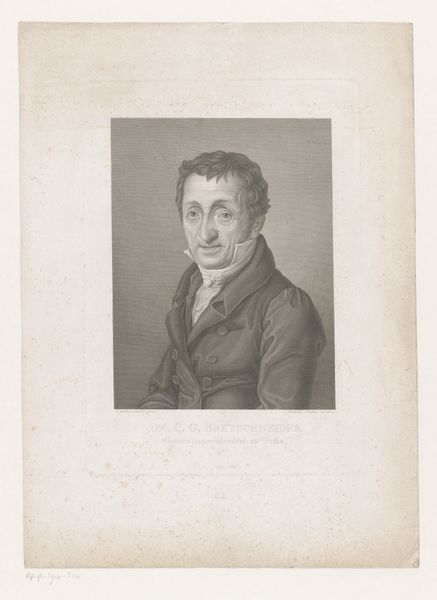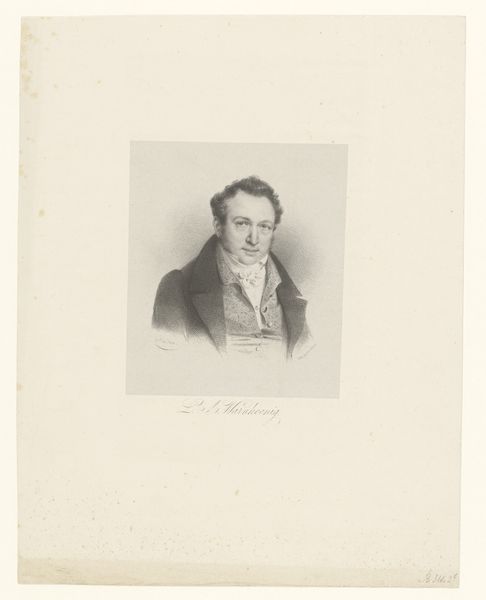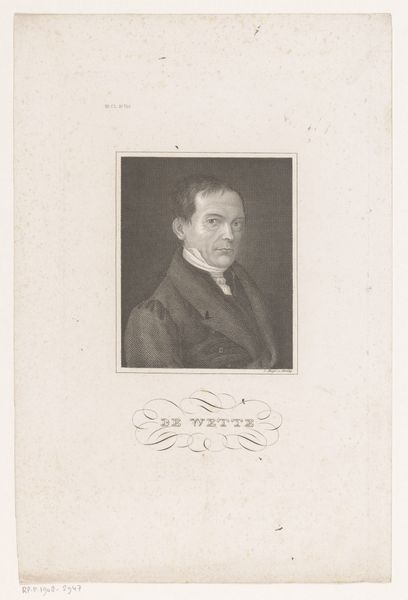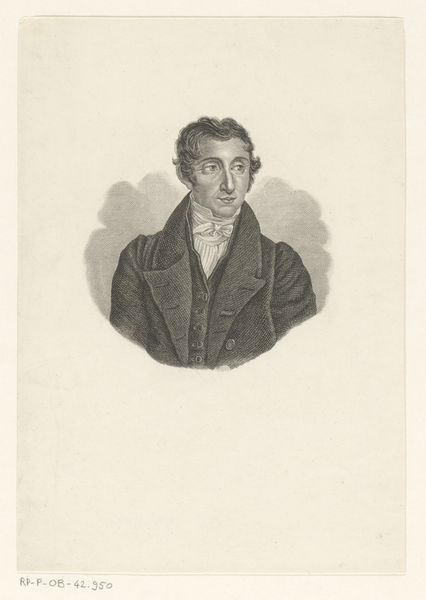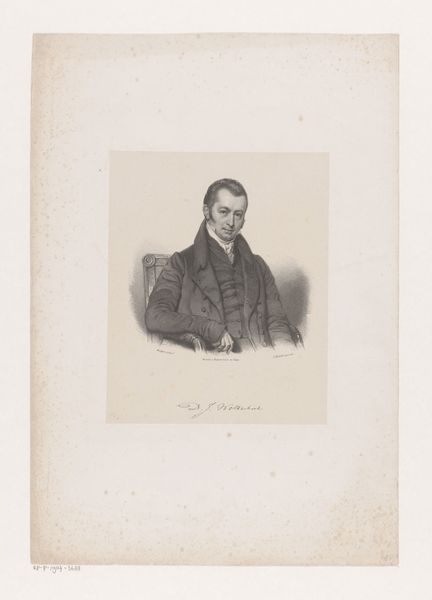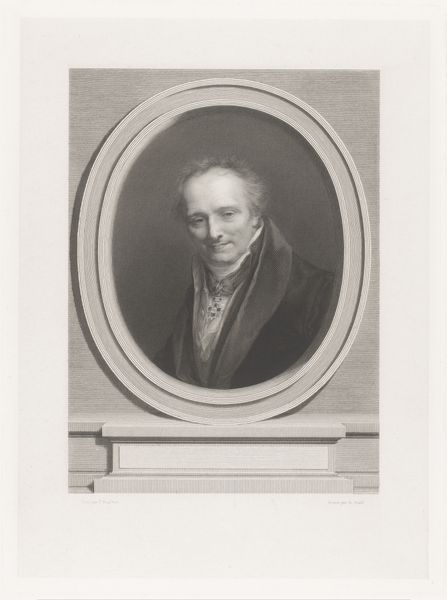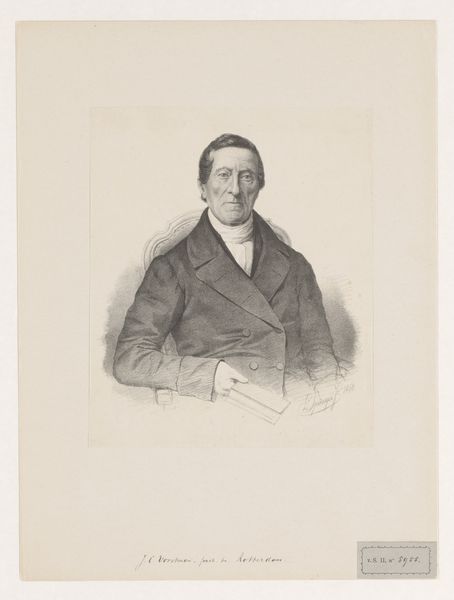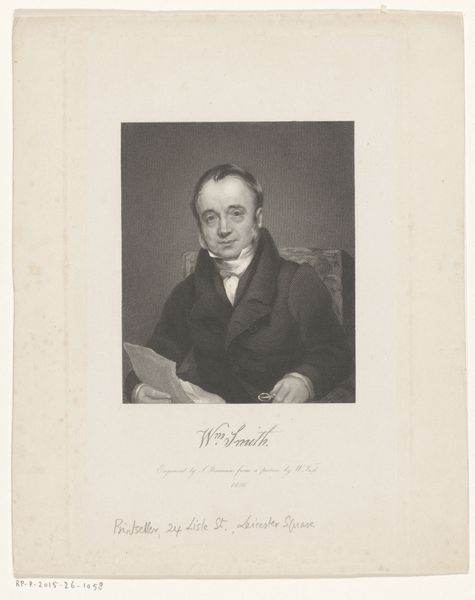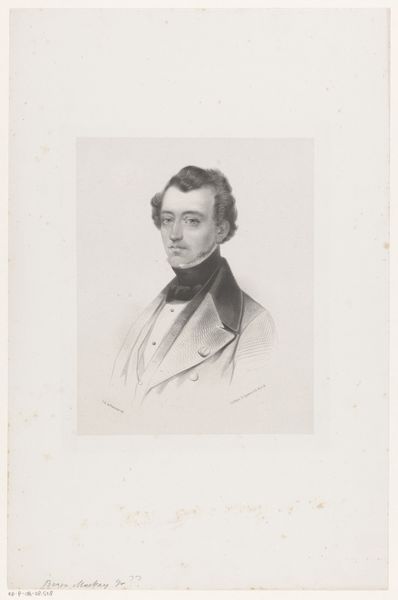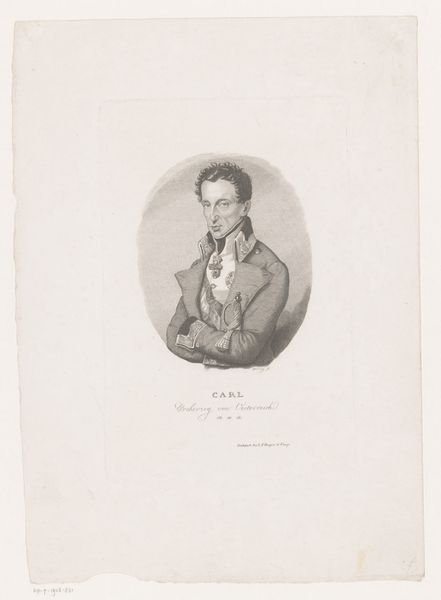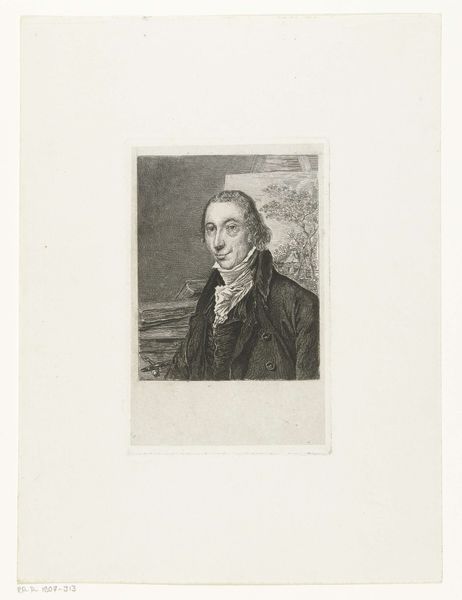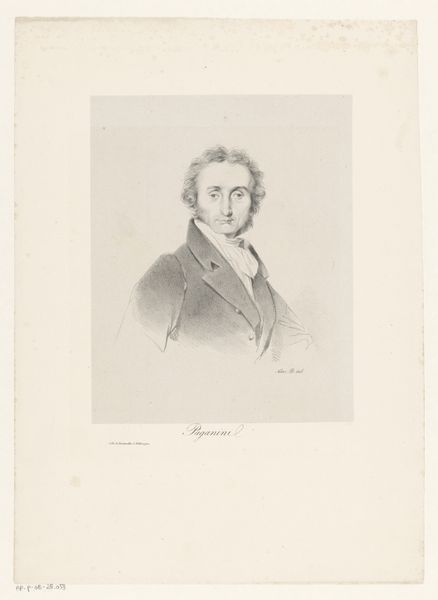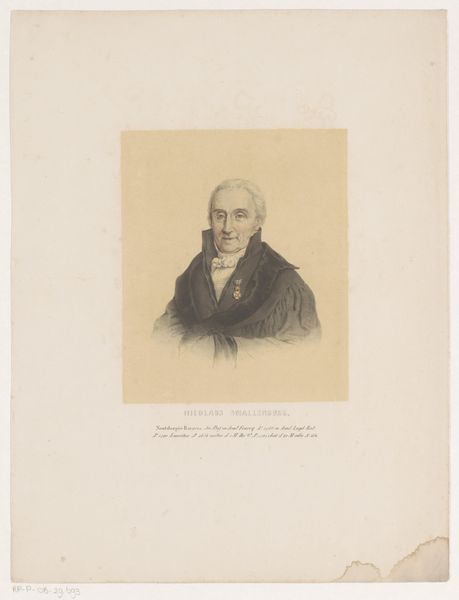
drawing, print
#
portrait
#
drawing
#
neoclacissism
# print
#
historical photography
Dimensions: height 355 mm, width 485 mm
Copyright: Rijks Museum: Open Domain
Curator: This is a print rendering a portrait of Hendrik Willem van Rossem, dating to sometime between 1826 and 1887. The work, which is in the collection of the Rijksmuseum, is attributed to Jan Wendel Gerstenhauer Zimmerman. Editor: He seems a serious man, wouldn't you say? There's an air of formality and reserved authority. The tones are muted, emphasizing the subject's sober dress and contemplative expression. Curator: Absolutely. These formal portraits of the era reflected a certain social standing. Portraits such as this played a critical role in constructing and reinforcing societal power dynamics through the meticulous depiction of the sitter’s class. Editor: True, his clothing and posture convey respectability and, perhaps, a degree of social prominence. But looking beyond the conventional, do you see the potential vulnerabilities in the eyes? I find his expression quite fascinating. Curator: I appreciate that perspective. Understanding that Van Rossem lived during a time of considerable social and political transformation is key. It encourages dialogue between art history and contemporary theories about identity and self-representation in the 19th century. Editor: And in examining how he's presented, it raises important questions. What stories were being told through portraiture during this period, and whom did they serve? The politics of image is what’s front and center here. Curator: I think reflecting on its artistic representation encourages a critical view of the past and a clearer awareness of how imagery can legitimize and normalize specific socio-cultural positions. Editor: Yes, considering how portraits shaped perceptions and solidified existing power structures really deepens one’s appreciation of works like this. Curator: It is these layered readings of a historical work that truly ignite engagement and spark vital questions. Editor: Agreed. Looking beneath the surface reveals so much more about the artwork and about ourselves.
Comments
No comments
Be the first to comment and join the conversation on the ultimate creative platform.
